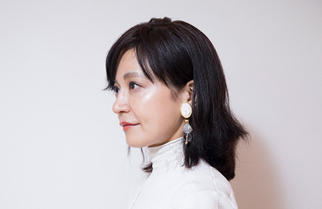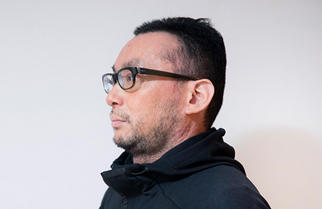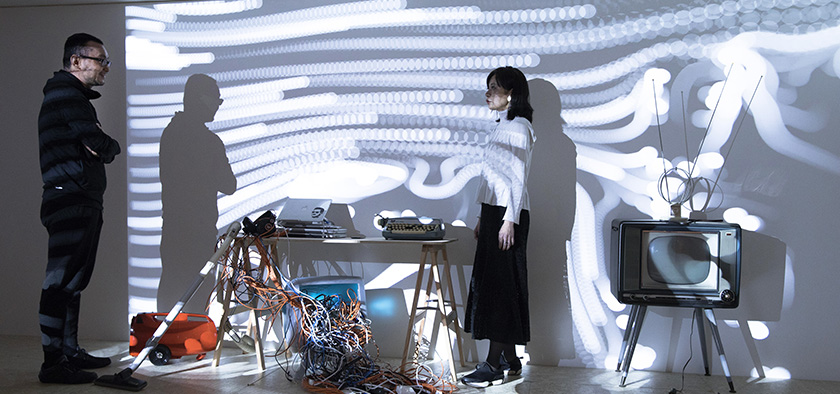
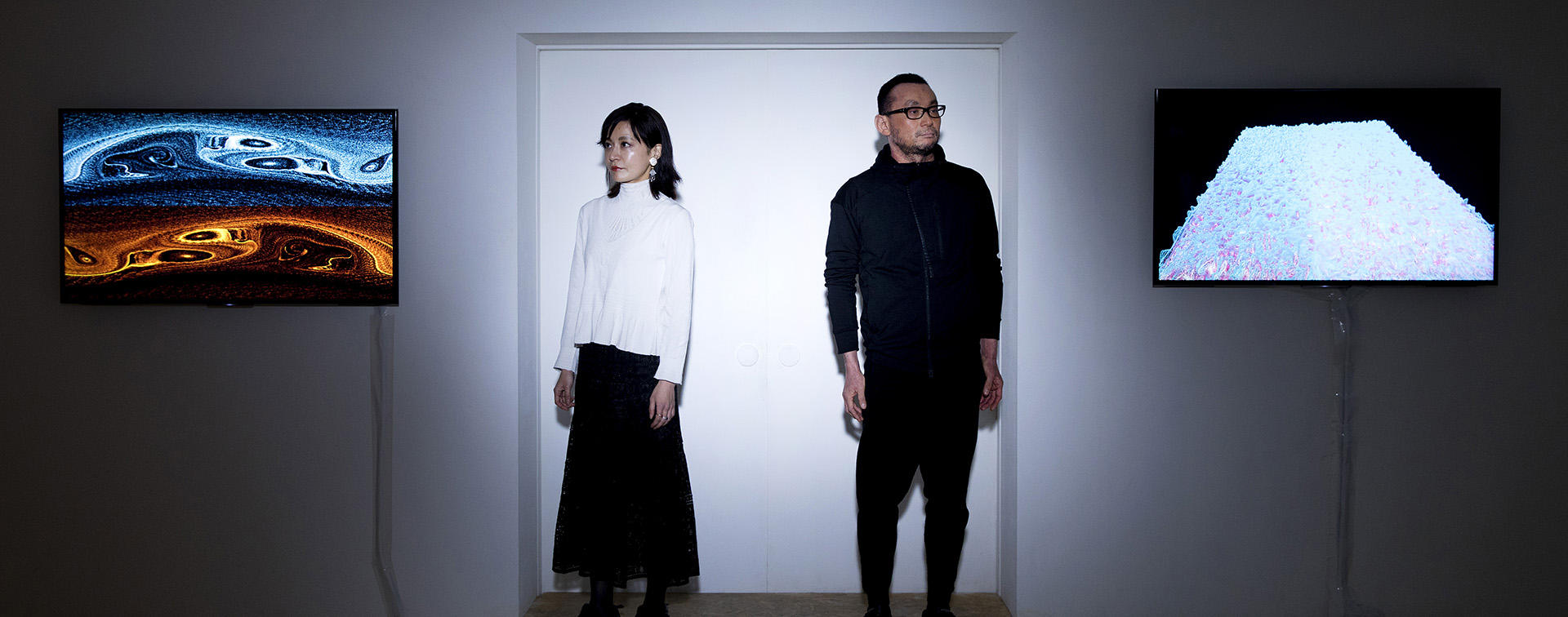
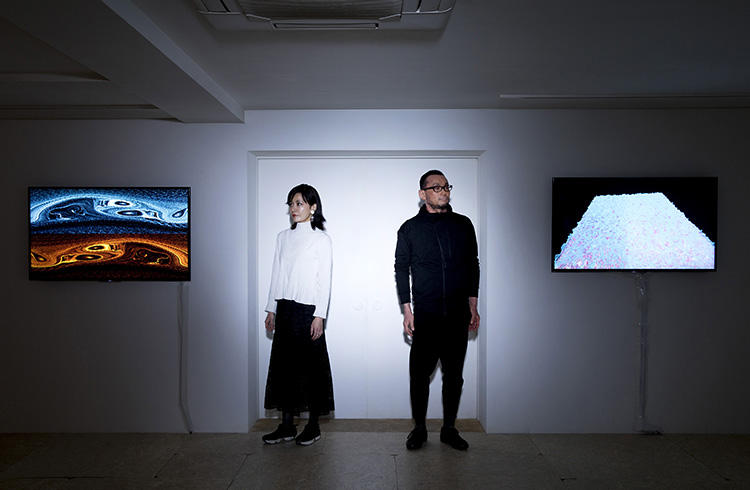
Making experiments technology and art in Roppongi
Hirokawa - Playfulness and frequent experiments will make the area interesting Wakita - Roppongi as a place for experiments in art and technology
There are many things in nature that humans cannot grasp; Akira Wakita, a scientist and artist, lets us see, hear and sense what is normally beyond our senses through his works that simulate the activities in nature, presenting us with a new perspective of the world. Fashion designer Tamae Hirokawa has a mission to create clothes that are like second skin and creates the "Skin Series" of unsewn knitwear under her brand Somarta. Wakita and Hirokawa both have ties to Roppongi, and we asked them about their views on the potential of art and design in Roppongi.
The beauty of digital technology, the hand skilled work for clothes
WakitaRegarding my ties with Roppongi, the design company I used to work at was in Azabu Juban, and until about 10 years ago, I used to live near here. Now I work at Keio University Shonan Fujisawa Campus (SFC) and every year, all the university laboratories come to Tokyo Midtown to present their findings at a conference called the Open Research Forum. In 2014, when I headed the executive committee for this forum, we held presentations not only at Tokyo Midtown but also at Super Deluxe and we also made broadcasts at Niccofarre. Now I'm involved in setting up Art and Science Gallery Lab Axiom, and I also hold art exhibitions, so I come about once a week to Roppongi.
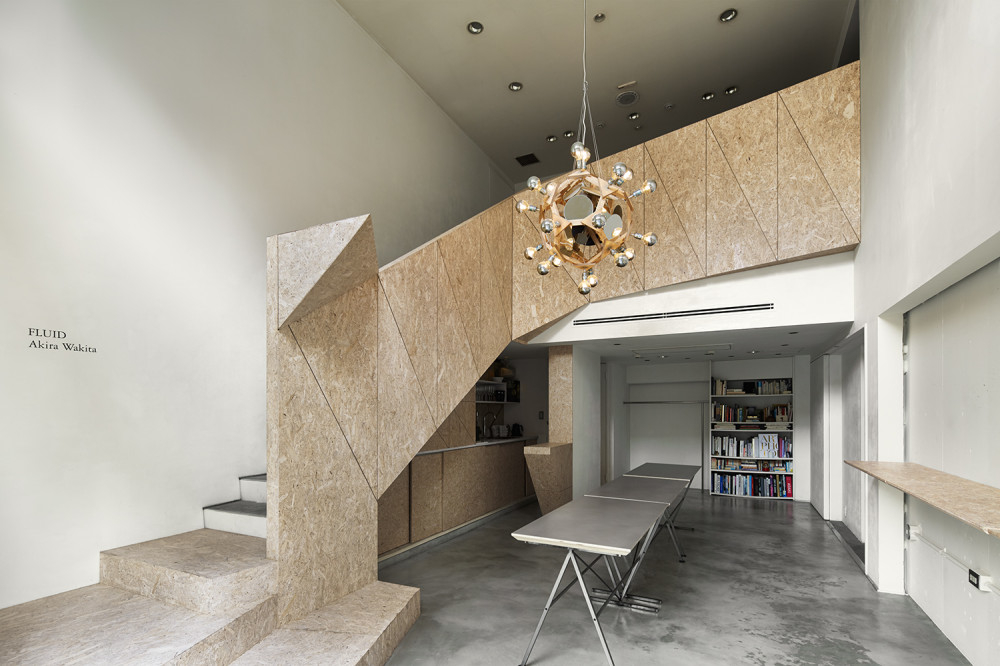
ART & SCIENCE gallery lab AXIOM
An art gallery which opened in October 2016 in Roppongi's Imoarai-zaka and which Akira Wakita helped to set up. The gallery also functions as a lounge and is intended to be an open space that links art and society. A variety of exhibitions are held with the aim of showing the common "axiom" found in both art and science.
HirokawaWhen I was a student, Roppongi seemed to be a very grownup place, so I felt as if I had little to do it. But when Japan Fashion Week was held at Tokyo Midtown, I finally began to get acquainted with Roppongi. This year, I participated in the talk session at Media Ambition Tokyo (MAT).
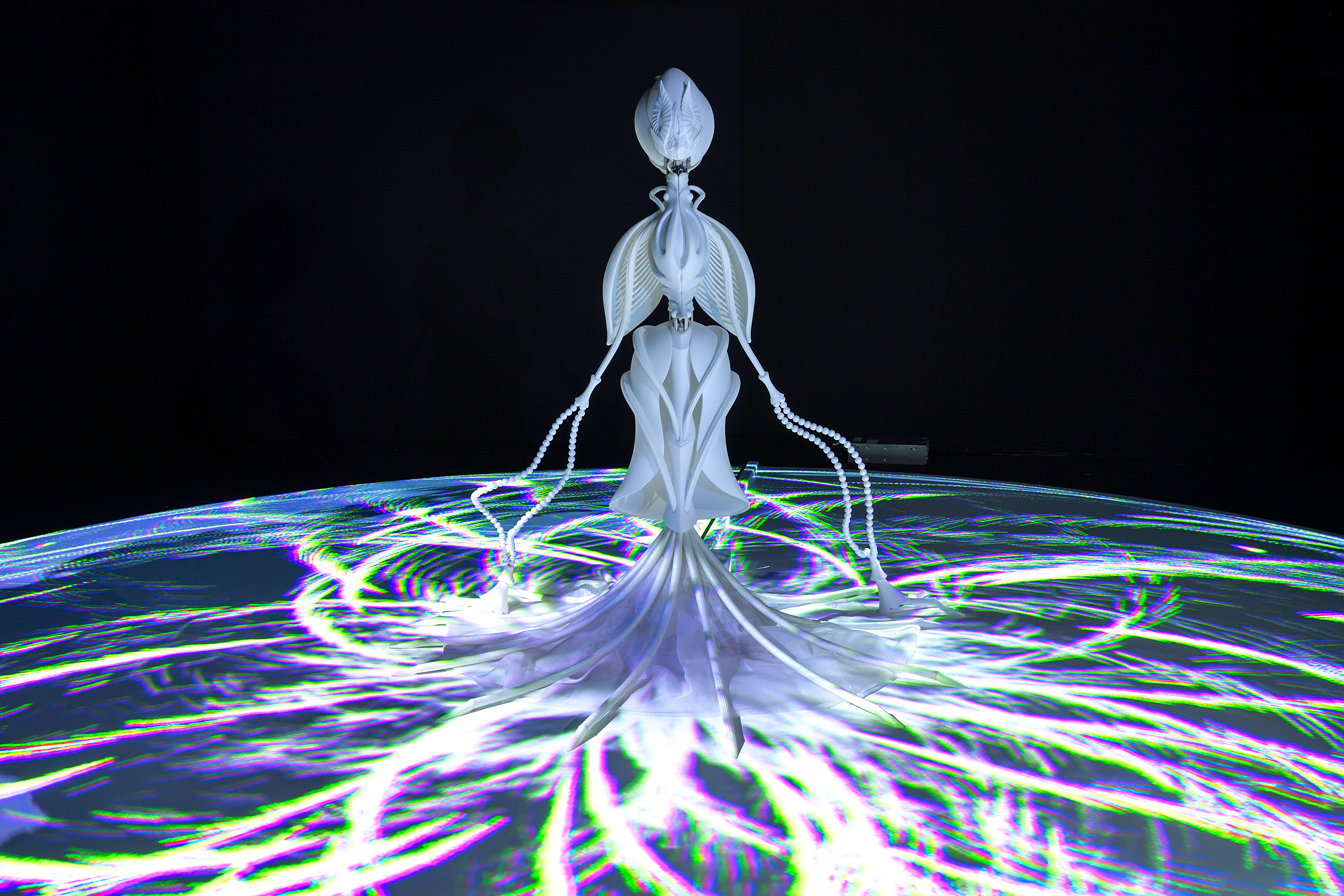
Media Ambition Tokyo(MAT)
An annual media art festival held in the Roppongi area. In 2018, the event was held from Feb.9 to Feb. 25. Shown at this event was "Visualization of Air Conditioner" - a work that Wakita made in collaboration with Daikin Industries. Hirokawa was in charge of the robot design for "Connected Flower" - a collaborative work with Nobumichi Asai and Honda Motor.
"Connected Flower" by Nobumichi Asai and Honda Motor
Photograph by Koki Nagahama
WakitaI also exhibited my works at MAT 2018, and I've always wanted to talk with Hirokawa-san who employs both computational design and craftsmanship in her designs. Hirokawa-san creates fashion made from new materials that are based on technology and scientific knowledge. I do not know of anyone else who does that kind of research and who also goes as far as making clothes and selling them. I think you are exceptional in that sense. I wonder how you manage it.
HirokawaI feel that designing clothes means taking the whole process into account including the stage where the clothes are delivered to people - that has always been my basic policy. The technology of the unsewn knitwear I make is relatively new in the history of fashion. It draws attention for being unusual, but it's just that there are not many people right now who can use the technology. In a hundred years, it's possible that all our clothes will be unsewn.
Since I was a student, it's been my wish to make clothes that are like skin. It just so happens that the unsewn method and digital technology matched my needs. I myself am actually a very low tech person. (laughs)
WakitaThat is unexpected, but perhaps that's the way it often is. I think that people who deftly use technology are in fact people who know about patient hand skilled work.
HirokawaIn the old days, clothing was made by professionals working alone, but now it's done by group work. In the future, I think a method will be increasingly taken where something is designed and a lot of people get together to create it. Because we now have a situation where the number of handcraftsmen is decreasing, technology and machinery will have to change.
WakitaThat is the essence of it. When a new technology is born, people in the streets and researchers might get excited, but unless high-end fashion companies and large manufacturers have the courage to adopt the technology, it will not become widespread. You are taking on the role of spreading new technology.
HirokawaI'm helped by the people around me. My encounters with people in technology has increased these days, and I've participated in events like MAT, but to me, the world of technology is like a magic world. When machines move on their own like an orchestra, I am amazed and wonder how it all works. I sense a great beauty in it but I am really a layman. (laughs)
WakitaI'm glad that you sense beauty. I often get questions about the mechanism of things. I wish more people would start a discussion by saying "It's lovely, isn't it?" or "How will this change the world in the future?" but people - particularly the Japanese - talk mostly about the technical aspects and how something is made. I think it's important to be naturally moved and to share that sense of wonder with others. A place where you can do that is MAT and I think that is a fine Roppongi event, but there are not many events like it.
HirokawaMAT is certainly an event that brings together people who are tech-savvy and those who are not, and which allows interesting things to happen. I am grateful for the marvelous experiences and challenges that are offered at this event.

Research, artworks, and commercial products
WakitaAbout 10 years ago, I went through a period of researching fashion technology: I did studies on fabrics that change color, and on wearable devices, doing things like connecting Shima Seiki's Whole Garment knitwear to the Internet and making remote output of data on the clothes. But it was just research, and we didn't end up making commercial products. So I admire people like you who have succeeded in actually selling clothes. At technological conferences like SXSW and SIGGRAPH, many technical aspects are showcased such as in the cyber fashion shows but while they give people a vague sense of the future, the shows end in about five minutes. It's difficult to make clothes every day for people to wear, and it's wonderful how you have overcome that hurdle.
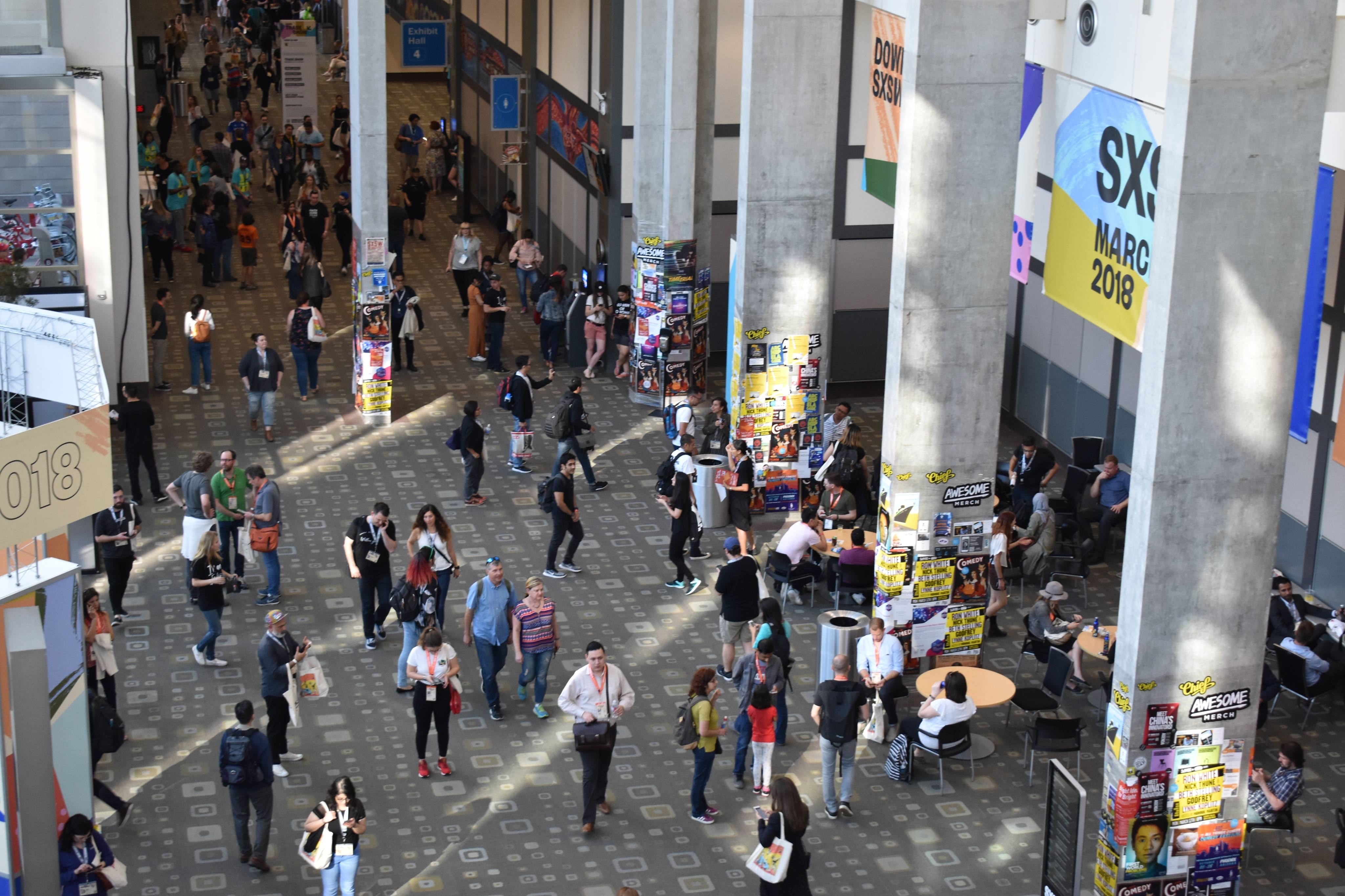
SXSW and SIGGRAPH
Held every March in Austin, Texas in the U.S., SXSW (South by Southwest) is a conglomerate of creative business festivals, consisting of the world's largest music festival, a film conference, and a festival focused on technology. SIGGRAPH (Special Interest Group on Computer Graphics and Interactive Techniques) started in 1974, is an annual international conference on computer graphics and interactive technology held in the U.S. The conference is supported by non-profit membership organizations made up of members working in a wide range of genres including software, design, art, games and education.
HirokawaI wanted to create the "skin series" of unsewn knitwear because I thought that if we could create clothes that are like second skin, it would expand the possibilities in the fashion world. But apart from the technology, it was necessary to also think about the designs that would make the clothes appropriate for everyday life.
There is the visual approach where you focus on beauty, and on making things that nobody has seen before, but at the same time, it's necessary to take a practical approach and ask questions like "How much will this cost?" and "Who is my target customer?", so I have to use both sides of my brain. What I make are not works of art, but commercial products, and there's a need to be attentive to details, carefully meeting all the requirements such as for durability.
I personally am fascinated with the technology of unsewn knitwear, and I feel that for the technology to develop, someone has to keep using it and updating it, even if on a small scale. By continuing to use the technology, I'm hoping it will become universal, and encourage more people to make designs that incorporate the technology.
WakitaI can imagine how very different making commercial products must be from making works of art. With a product, you make research and development, and give form to the concept through prototyping. Then from that point on, it must be tough. As you just said, so many factors need to be considered like ageing, wearability, costs, and of course, the market. A lot of tools have now been developed that allow for experimental production, and so when an idea comes to you, it's now possible, with a little bit of effort, to create things that will last for a short while. At MAT, for example, the media artworks will all move properly for the duration of the event. But it would take a tremendously long time to turn those works into commercial products which can be taken outdoors and which will endure the unpredictable things that children might do with them.
The Internet's revolutionary impact on fashion
HirokawaYour work "Symptom Visualized" makes people think about the fact that we are surrounded by the sounds of electrical appliance in our daily lives - I feel the power of art in it. The way people view things is so interesting. There is never exactly the same view. When there are a hundred people, there are a hundred different views. But there's a deep significance in presenting your own perspective and making people notice what you are looking at. Art galleries are special spaces. For instance, when people come to an art gallery and see a work made by you, Wakita-sensei, they sense something and that something accumulates inside of them, and it is later filtered and comes out in a different, new form of expression. Art galleries have that kind of mechanism. That's why I am drawn to art.
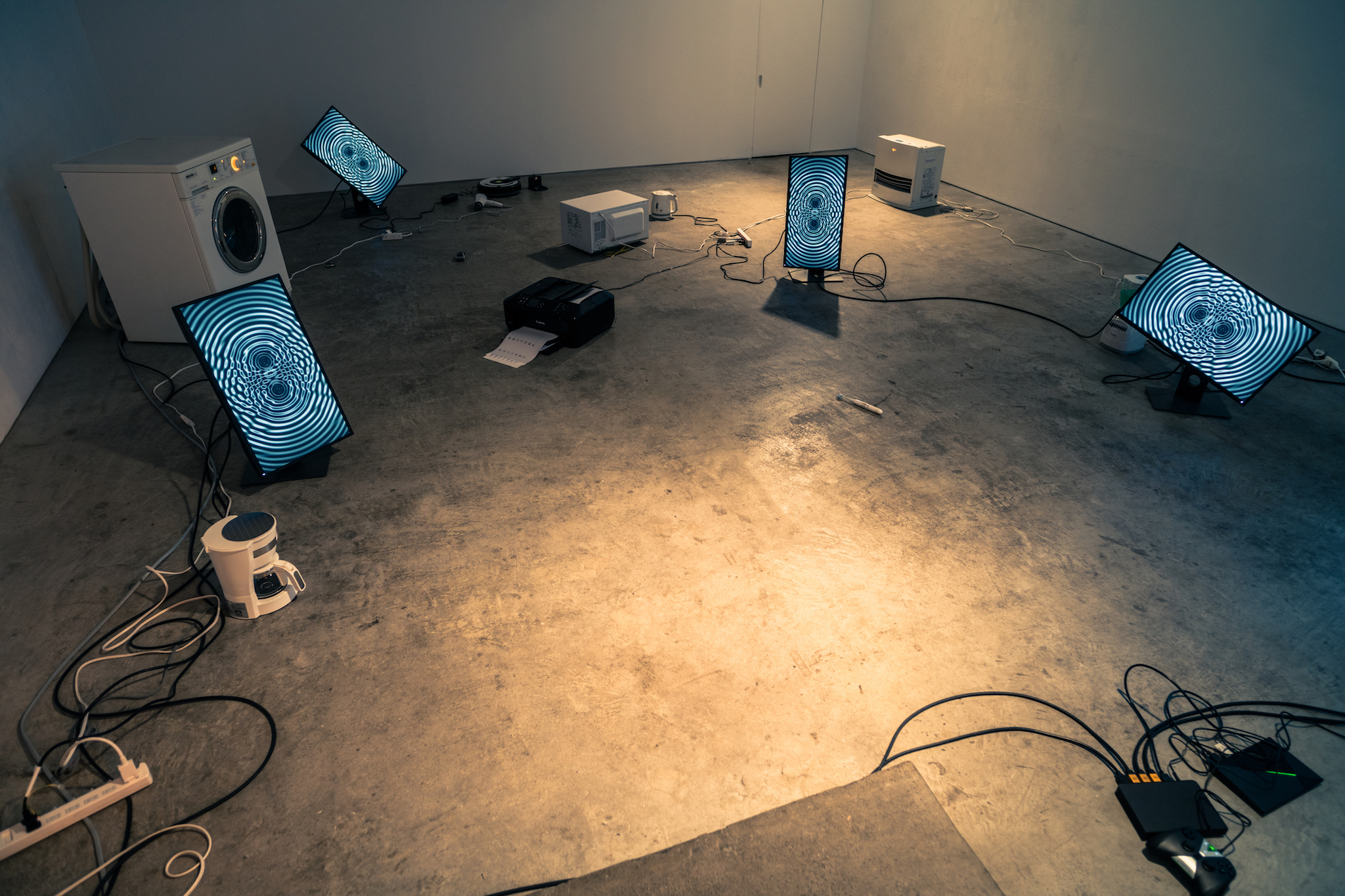
Symptom Visualized
Akira Wakita's solo exhibition which was held from Jan.20 to March 10, 2018 at Art & Science Gallery Lab Axiom. Works on display included an installation combining projection mapping with junk items, and a work which "extends" the physicality of LCD monitors and which Wakita describes as incorporating a "materialistic approach". Also shown was a work which was a spinoff from the live performance made with Tetsuya Komuro at the MUTEK/RedBull Music Festival.
I became independent around 10 years ago which was a time when the fashion world was starting to change. When I decided to strike out on my own, I thought a lot about how the role of fashion designers must inevitably change in an age where the Internet and smartphones have become indispensable in everyday life. I felt that if an environment could be created where all kinds of people could work together, the world would become a richer, more interesting place. In the history of fashion, the industrial revolution is considered to have been a time of transformation, but I feel that the spread of the Internet had the same amount of impact or perhaps an even bigger impact on fashion, and that the world has changed a great deal.
WakitaI'm sure everything would have been different if there had been no Internet. In a world without the Internet, I probably would have become a serious engineer. I was originally an engineer of 3D CAD, making formula for software to design automobiles and airplanes. The Internet allowed me to make my thoughts public and to connect with people, and it hugely influenced my approach and my work. Without the Internet, I would not be here at this point today.
HirokawaThe way people treat fashion - the priority of values - has changed considerably too. In a sense, smart phones have become fashion items, and I think fashion has a wider meaning now. Fashion shows have a "live" feeling, and are appealing, and I myself have shown clothes on the runway, but I have also sometimes wondered, "Should we keep on doing this?" It's better to have different forms of presentation, so I'm currently trying to find a new way that departs from the conventional fashion show.
In the past, fashion shows were held for a limited audience, but now that we have the Internet, it's become possible to hold more open shows. Recently, we did a show with contemporary dancers at the International House of Japan; it was a marvelous performance expressing my Skin Series. New, creative projects are fun, and I hope that there will be more of such projects in Roppongi. The show was realized because many types of creative people got together; of course, you can't do these things alone. The International House of Japan was supportive and the dancers came up with ideas. It's delightful when all these elements come together to create something; I hope that such activities will be accelerated.

Show with contemporary dancers
A performance titled "enchaîne" held in 2018 at Dance New Air, a dance festival held in Tokyo every two years. It was choreographed by dancer and choreographer Ema Yuasa, while the costumes were designed by Tamae Hirokawa.
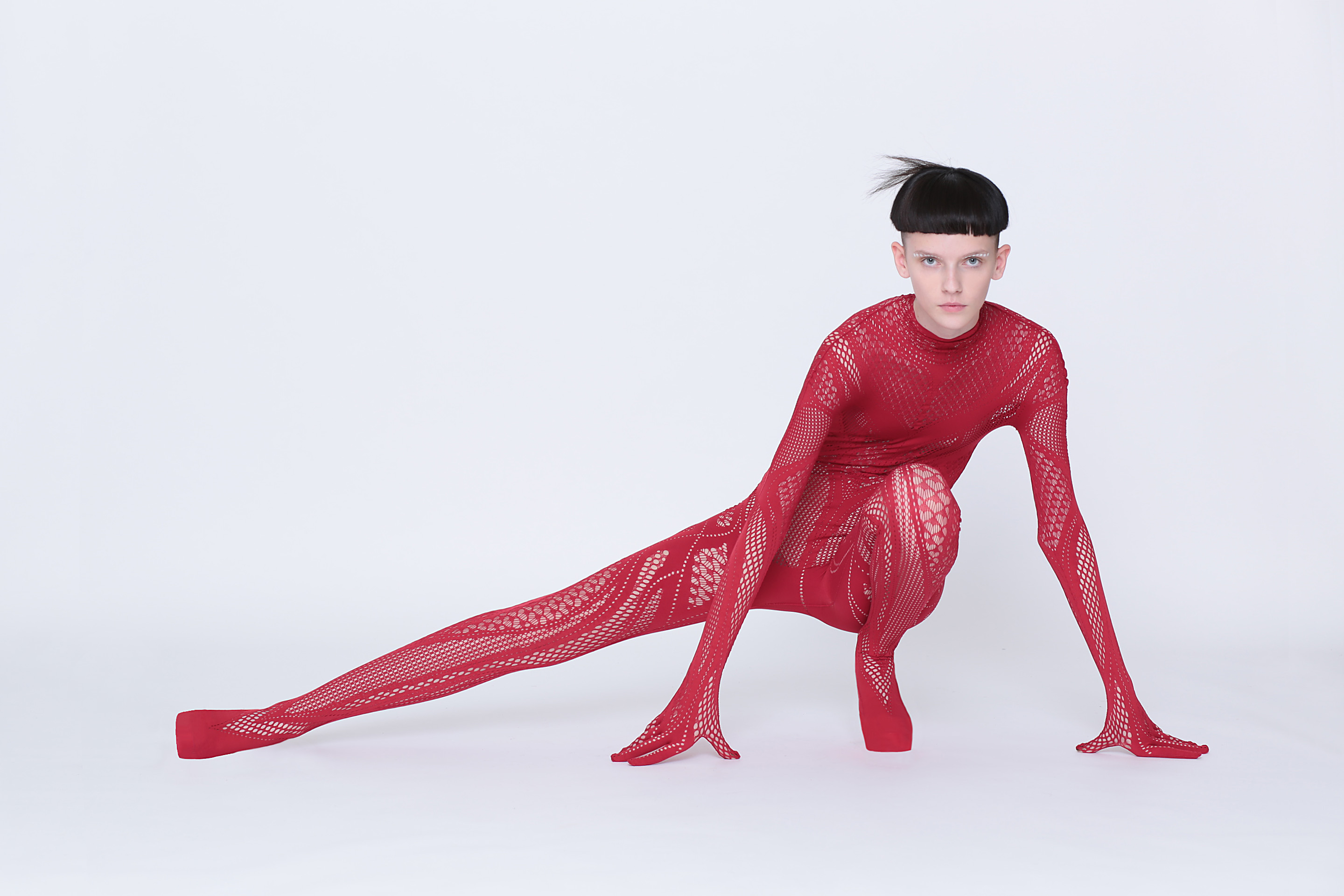
Skin Series
An unsewn knitwear line which has become synonymous with Tamae Hirokawa's brand Somarta, a brand she founded in 2007. Lady Gaga is known to be fond of wearing the clothes. In the summer of 2017, the Skin Series became a part of the collection at Museum of Modern Art (MoMA) in New York and was a topic of conversation.
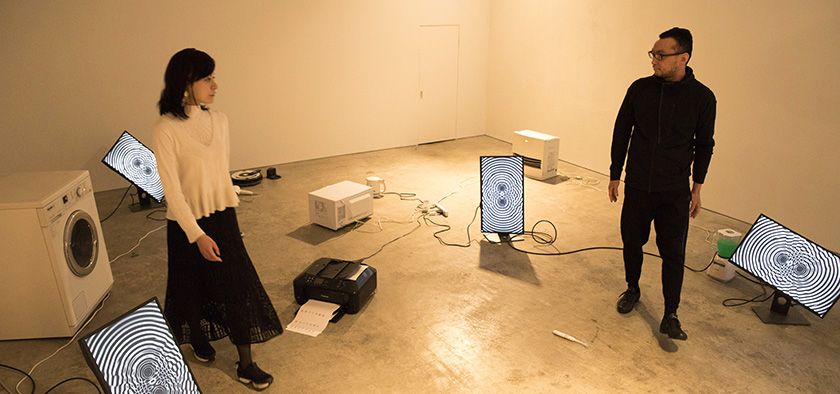
Cities that function to give inspiration
WakitaMy workplace is SFC (Keio University's Shonan Fujisawa Campus) which is located in Fujisawa City, Kanagawa Prefecture. The campus was created at a time when it was a trend for universities to be built in the suburbs. It's inconvenient and we are beset with the difficulty of making innovation in the countryside. While we come to Roppongi once a year for the Open Research Forum (ORF), I have long felt that students and researchers need to permanently stay in the city.
HirokawaWhen I started working, I became a resident of Tokyo and was surprised that the city has everything - movies, art museums, and books and so on. But I cannot appreciate everything in my lifetime. I guess that what people want from cities differs individually, and are focused on a few things. When I ask myself what kind of place Roppongi is, I feel that it has characteristics that cannot be found in other places like Asakusa, Shinjuku or Shibuya; my personal impression is that Roppongi can be described by words like "sophisticated" and "high quality." I think if I had been born and raised here, things would have been very different.
WakitaI would like to see Roppongi become a place with research and development facilities that are like future centers (facilities where the government, local governments and companies hold discussions to solve problems) - a place where the creators and corporations in Roppongi can always collaborate and make prototypes, envisioning what they can do for the future. I wish there will be space in Roppongi for laboratories - for colleges and research facilities. The ideal would be for people, from elementary school children to grandfathers, to come here to be inspired or to inspire, and for the streets and the people to keep evolving. I think it's important to have a permanent place where the relationship between people is visually expressed in a pop way, and which is within easy access for everyone.
HirokawaIs there an example of such a place?
WakitaOne example is a city called Linz in Austria which has a media art festival called Ars Electronica where art and science and technology fill the streets. The city of Linz even holds the shares of the organization that holds the festival. We could learn from Linz; if the area of Roppongi and the administration got together, and if the future centers that I just mentioned were built, I think the area would change. The people in the private sector businesses already have their ties to Roppongi, so ideally, we should take a step further, and discuss policies. When a new technology is born, it gets hampered by policies. Policies are the big reason that progress is obstructed. So I believe we need a system where the private sector, research facilities and policymakers come together as a proper team. If that could happen in Roppongi, things will become so much more exciting.

Ars Electronica
An international media art event held in Linz, Austria where awards are also presented. The establishment of a global center for digital art and culture has enabled Linz to go beyond the conventional measures of maintaining the traditional culture and promoting tourism. Linz is often introduced as a model case of a city that has succeeded in reviving its community through arts and culture activities.
The future is not about solving the issues at hand
WakitaIn the last few decades, it has become clear that design and engineering are very effective in solving current problems. We already possess the methods of solving problems. But what will be more important in the future is defining what the problems are. In other words, the method of discovering the problems will be vital. As you said earlier, art is about individuals looking at the world through their own unique perspectives. On the other hand, science is about looking at the uniqueness of individual things through a universal perspective. We need to contemplate the future by looking at the world from both perspectives.
The future is not about how we solve the issues at hand; the future is about realizing what should be done. We should look at the future through the perspectives of art and science and smoothly make use of design and engineering as we go along; we need those two wheels. I hope that people will come to Roppongi and find that the way they look at the world has changed. The ideal will be for people to periodically come here and stay for a few hours, and when they go back home, things will look very different from before. I think the role of Roppongi is to be a place that provides a perspective on the future.
HirokawaThere are so many genuine things in Tokyo which can be a source of inspiration, and I think they should be actively used for education. Since there are many art museums in Roppongi, perhaps the government or the Tokyo government could use them more in art education for children. Genuine things emanate energy - there is a tremendous power in real things. Roppongi has many good facilities like the International House of Japan where real experiences can be had on a day-to-day basis, so it would be great if such facilities made available. Maybe the people and children who live nearby could take the first steps.
WakitaThere are many art galleries in Imoarai-zaka where we are now; people can encounter art on the ground level. In contrast, the Mori Art Museum is on the highest floor of Roppongi Hills, and people can appreciate art while taking in the view of the massive city. It's so stimulating that you can look at art from a place with a grand, panoramic view of Tokyo, and also encounter art on a small scale while walking through the streets. There's probably no other place that offers such two contrasting experiences.
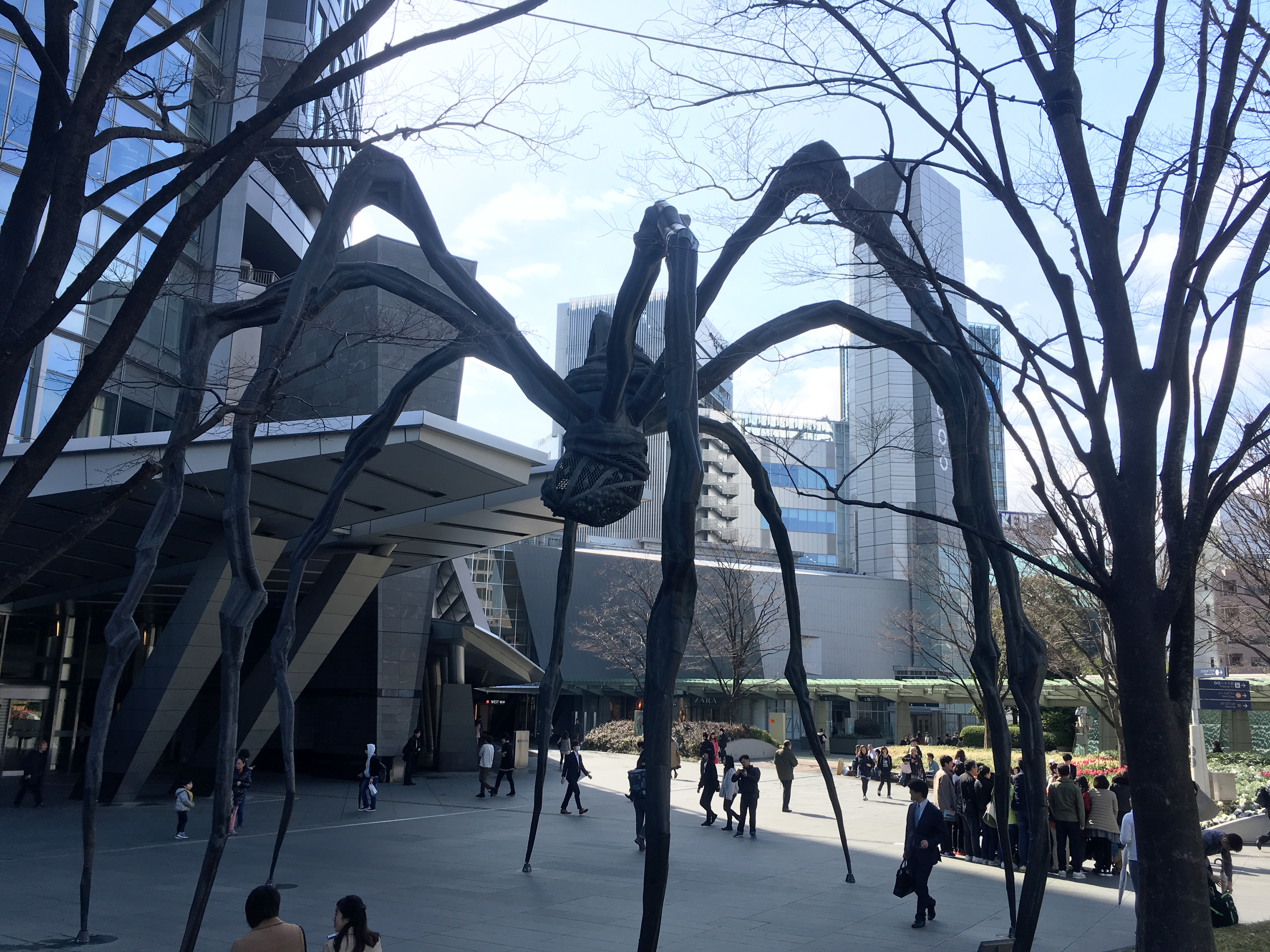
Louise Bourgeois's spider (Maman)
A huge sculpture of a spider by American sculptor Louise Bourgeois. An artwork representing a mother, its overwhelming presence cannot be missed by anyone visiting Roppongi Hills. Aside from the Maman sculpture at Roppongi Hills, there are other similar sculptures in eight other places in the world.
HirokawaWhen I go abroad, I often see children in groups at museums like the Louvre Museum. But I don't seem to see many such sights in Tokyo. I wonder why. The museums in Tokyo are probably not all that exclusive. Perhaps the same sort of artworks that are in the front garden of Roppongi Hills should be installed in the streets of Roppongi; if there were artworks all over the place, they might draw more people. If there were works like Louise Bourgeois's spider (Maman) here and there, it would give people a clearer impression that Roppongi is a place of experimental art.
Allowing experiments in the streets to foster growth
WakitaIn Linz, there is a building called Ars Electronica Center, a concert hall called Brucknerhaus, and the University of Art and Design Linz. The city has produced numerous contemporary artists. And it's normal to see in everyday life, an elderly couple holding hands and coming to look at media art. In a sense, that kind of thing might be exactly be the opposite of what you find in Roppongi.
HirokawaBecause we live in a time when all the information can be gained from the Internet, people seem to be searching for creative, real-life things. Perhaps those things can be presented in open places and don't need to be in fixed locations. Roppongi has many diverse spots like the International House of Japan and Roppongi Hills; if the message could be continually sent out that this is a stimulating place where all the sophisticated things are, I think that people who like experiments will gather here. The other day, I went to New York for the first time in a long while for a fashion-related exhibition. The venue was similar to Tokyo Midtown; after the exhibition preview, I went out and found myself in a bar-like space where music was being played. It was very stimulating, and it made me think that we ought to be more experimental and playful too.
WakitaYes, that is important. For example, we should keep on doing something until we get complaints three times in a row. Things won't become exciting unless we persist with that kind of experimental spirit, don't you think?
HirokawaMaybe we ought to take that kind of strong attitude and say "What's the problem? If it's fun, it's okay!"
WakitaWith the advent of the Internet, it's become possible to connect online, so we no longer need physical places for media. The people have become the media. That's why we should place importance on the locality and the context of real-life places. In developing the area, we should keep in mind that Roppongi has its sleazy spots, and its subculture, and that it is a place for drinking.
A place for experiments where things can be "extended"
WakitaWhen I hold exhibitions at art galleries, I write explanations for my works such as their concepts, but instead of being asked, "How did you make this?" it makes me happy when visitors candidly tell me about their personal interpretations - I enjoy getting feedback. Their views help to change the original intention and concept of my works. My wish is for my works to be seen by people who will give them new interpretation, who will describe them in revealing words. There is no telling however, who will say those things. For instance, it could be an elderly woman who happens to mutter something. I cannot tell who they might be. So I think it's important for an area to be like a street where all kinds of people come and go.
Once, a person from Kyushu who had come to Roppongi on a one-day business trip came to my exhibition; it's interesting when people like that just casually drop by and tell me what they think. On the other hand, there are events like MAT where many people come to take photos to post on Instagram and I think it's important for me to see them looking at my works for about five seconds.
HirokawaAt fashion shows in Europe and Japan, everyone is holding a smartphone and trying to take photos from a good angle, so they don't applaud at the end of the show. They come to a real-life show and yet they are looking at the clothes through a smartphone, and not looking at reality. It makes me somewhat sad.
WakitaThe point about people taking too many photos reminds me of something. You talked earlier about "second skin". Apparently the notion of clothes as second skin was put forward by Marshall McLuhan who had the idea of the tetrad. He said that the four functions of "enhances", "obsolesces", "retrieves" and "reverses" are present in any design. A camera is a tool that enhances the eyesight, but it can also make something obsolete. When something is made for an intended purpose, it ultimately leads to three by-effects. By "reverses" McLuhan meant that when something is used many times, it transforms into something else; unless you thoroughly use something, you can't tell what it will turn into. So if we keep excessively using the smartphone camera and the Instagram application, we will eventually see them change into things we never expected. It could lead to a different phenomenon or make us aware of something, and we could either look at it as a side-effect, or think of it as an opportunity to do something new. Whenever we use continually use something, there comes a point when we desire a new function, or we notice a different way of looking at the world.
HirokawaIt's about the extension of the body, isn't it? It was much later after the idea of the "second skin" came to me that I learned that Marshall McLuhan first used the term; I have bought and read his book.
WakitaMcLuhan said that so far, our bodies have lived in a visual space, but that we would eventually enter the electronic age. He talked about the whole body wearing electronics, though I don't know if he was predicting wearable gadgets or just playing with words. Speaking of which, I have some fairly specific ideas for projects that I would like to do with you, Hirokawa-san. For example, I would like to do something related to the dynamism of the human body. Our bodies breathe and metabolize; if those things were given outer expression, perhaps they would lead to fashion.
It might be possible to show through clothes how you are feeling, such as feeling tired, or that the blood is circulating through your body properly. Maybe clothes could be created that show the beauty of the human body - clothes which are like second skin and which express physical activities. In the Edo period, when people were in a hurry, they lifted their hakama and ran. It's a sight that really conveys the sense of hurrying. I think we could make clothes that "extend" a person's feelings or circumstances in a charming way.
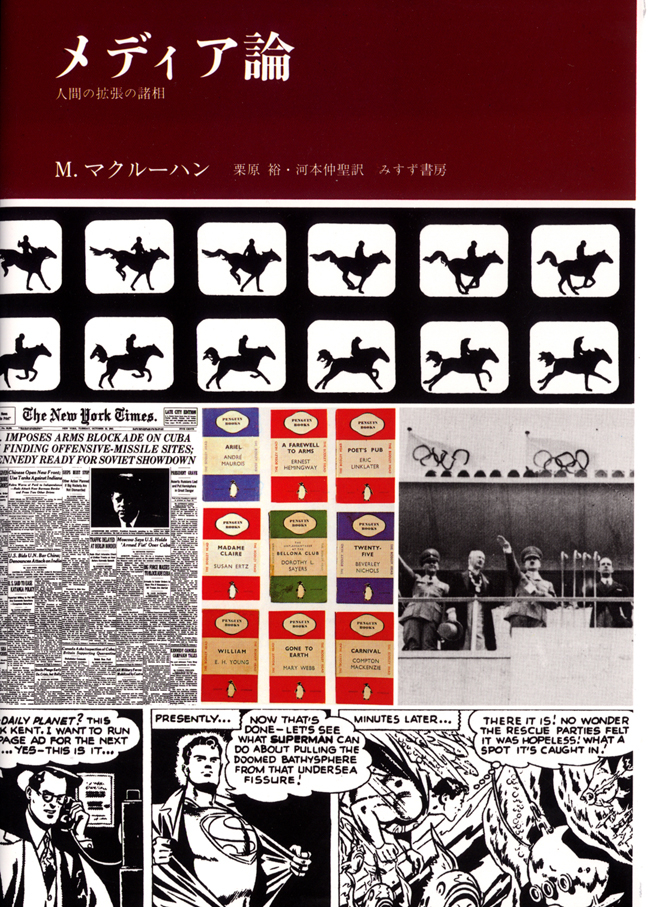
Marshall McLuhan
A Canadian writer and philosopher. His representative work is the book "Understanding Media: The Extensions of Man" published in 1964 which today is still regarded as an essential classic by people studying media.
HirokawaWhen I make clothes, I often get inspiration from nature; I am also interested in what you just mentioned, Wakita-san, about giving expression to things that cannot be seen. The Olympic Games will be held in 2020 in Tokyo, and I was thinking about the clothes of the Olympic torch runners. Perhaps it would be interesting if the color of the runners' clothes changed according to their location. The relay will start in Brazil, and as the Olympic torch travels around the world, the runners will wear the colors of the national flags of countries in the world. All the different colors - the colors of Brazil, of South Korea, and so on, and finally when it reaches Japan, the runners will be wearing the colors of Japan. It's an idea that combines visual elements with location and the physical body.
WakitaIt would indeed be nice to have clothes that make the runners look good. Perhaps the clothes could also change shape. I once did research on shape-changing fabrics. Using conductive textiles and ink that changes color with chemical reaction, I experimented with clothes that changed color in line with data from the body which was connected to computer signals. The clothes have yet to be made into commercial products but I feel that you, Hirokawa-san, would be able to do it.
HirokawaThat sounds interesting! I wish we could hold experiments in Roppongi. If we propose doing the project here, I wonder if we could be kindly offered a place. (laughs) We are in a period of transition now; systems are changing and it would be fun to experiment and to change the area. I hope that Roppongi will be a place that will allow the kind of experiments that we just talked about.
Editor's thoughts
Wakita-san takes the approach of combining design and engineering in his works, while Hirokawa-san makes fashion by blending craftsmanship and digital technology. Listening to their dialog, I felt I had gained a slightly better understanding of the media art world - a world based on technology and which will no doubt keep developing in the new age. It was a thought-provoking interview. It made me realize that we need to re-interpret the characteristics of Roppongi, and that design and art should be considered for creating an area for the next generation. The interview also made me see more clearly how important it is to keep on making all kinds of experiments.




